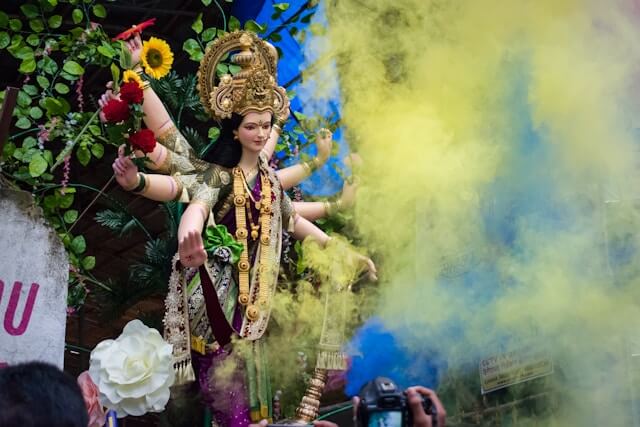Religion has been an integral part of human civilization for millennia, shaping cultures, guiding moral compasses, and providing solace in times of uncertainty. As we navigate the complexities of the 21st century, the role of religion continues to evolve, adapting to new challenges while maintaining its core essence of spirituality and community.
At its heart, religion offers a framework for understanding the world and our place in it. Whether through the monotheistic beliefs of Christianity, Islam, and Judaism, or the diverse pantheons of Hinduism and ancient Greek mythology, religious traditions have long sought to answer humanity’s most profound questions: Why are we here? What happens after death? How should we live our lives?
These existential inquiries have led to the development of rich theological traditions, each with its own set of rituals, symbols, and sacred texts. The Bible, Quran, Vedas, and other religious scriptures have not only guided believers but have also profoundly influenced literature, art, and philosophy throughout history.
One of the most visible aspects of religious expression is through symbolism and adornment. Across faiths, we see the use of special garments, accessories, and jewelry that signify devotion or mark important life events. For instance, the Christian cross, the Jewish Star of David, or the Islamic crescent moon are often worn as pendants, serving as both personal reminders of faith and outward declarations of religious identity.
In recent years, there has been a growing trend in personalized religious jewelry, with items like Mother & Daughter Jewelry becoming increasingly popular. These pieces often incorporate religious symbols or meaningful quotations, creating a tangible connection between family bonds and spiritual beliefs. A mother might wear a necklace with a prayer for her child’s protection, while the daughter carries a matching bracelet, symbolizing their shared faith and the enduring love between them.
Beyond individual expression, religion plays a crucial role in fostering community. Houses of worship – be they churches, mosques, synagogues, or temples – serve as gathering places where believers come together to practice their faith, celebrate important occasions, and support one another through life’s challenges. These communities often extend their reach beyond spiritual matters, engaging in charitable works and social services that benefit both their members and the broader society.
However, the relationship between religion and society is not without its complexities. Throughout history, religious differences have been at the root of numerous conflicts, from the Crusades of the Middle Ages to modern-day sectarian violence. The intersection of religious beliefs with politics and law continues to be a source of tension in many parts of the world, particularly around issues such as reproductive rights, LGBTQ+ equality, and the separation of church and state.
Moreover, the rise of secularism and scientific advancement has challenged traditional religious narratives, leading to a decline in religious affiliation in some parts of the world, particularly in Western Europe and North America. According to the Pew Research Center, the percentage of Americans who identify as Christian has been steadily decreasing, while the number of those who describe themselves as atheist, agnostic, or “nothing in particular” has been on the rise.
Despite these challenges, religion continues to demonstrate remarkable resilience and adaptability. Many faith traditions are finding new ways to engage with younger generations, leveraging technology and social media to spread their messages and build virtual communities. Online sermons, religious apps, and faith-based podcasts are becoming increasingly common, allowing believers to connect with their spirituality in ways that fit into their modern lifestyles.
Furthermore, there is a growing interest in interfaith dialogue and cooperation. Religious leaders from various traditions are coming together to address global challenges such as climate change, poverty, and human rights. These efforts highlight the shared values that underpin many religious teachings, such as compassion, stewardship of the Earth, and the inherent dignity of all human beings.
The role of religion in personal development and mental health is also gaining recognition. Many people find that their faith provides a source of comfort, purpose, and resilience in the face of life’s difficulties. Studies have shown that religious or spiritual beliefs can be associated with better mental health outcomes, including lower rates of depression and anxiety, and improved coping skills in times of stress.
As we look to the future, it’s clear that religion will continue to play a significant role in shaping our world, albeit in evolving forms. The challenge for religious institutions and believers alike will be to find ways to honor their traditions while remaining relevant and responsive to the needs of a rapidly changing society.
In this context, symbols of faith like Mother & Daughter Jewelry take on added significance. They represent not just religious devotion, but also the passing down of values and beliefs from one generation to the next. As mothers and daughters wear these matching pieces, they carry with them a physical reminder of their shared spiritual journey, bridging the gap between ancient traditions and modern expressions of faith.
Ultimately, the enduring power of religion lies in its ability to provide meaning, community, and a sense of transcendence in an often chaotic world. Whether expressed through grand cathedrals or simple pieces of jewelry, the human quest for spiritual connection continues to be a defining aspect of our collective experience. As we move forward, the tapestry of faith will undoubtedly continue to evolve, weaving together threads of tradition and innovation to create new patterns of belief and practice for generations to come.

